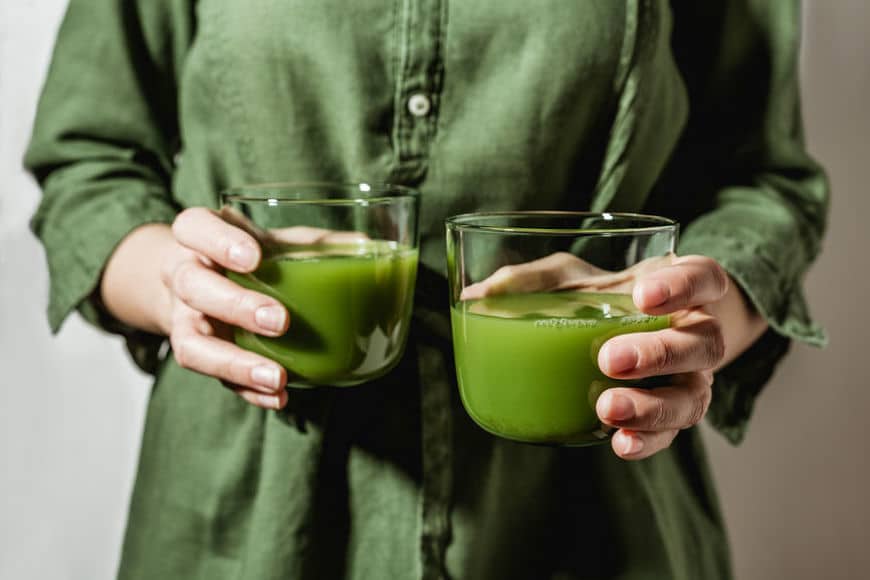
Wheatgrass is the OG healthy smoothie add-in, but what exactly is it good for?
by Emily Laurence
Between adaptogens, collagen, chia seeds, and CBD, smoothie making has gotten pretty tricked out. But before there was a whole slew of boosted ingredients, there was good ol’ fruits, vegetables, and wheatgrass.
Yep, wheatgrass. It’s about as old-school wellness as you can get, but just because it’s not exactly making headlines anymore doesn’t mean its nutritional benefits have lessened any. Wheatgrass, the young grass form of the wheat plant, is an underrated healthy powerhouse! Here, registered dietitian Kristen Johnson Brogan, RD, highlights all the science-backed ways it benefits the body. Keep reading for the full intel.
What are the health benefits of wheatgrass?
1. Wheatgrass helps the body detox. One of the major reasons why wheatgrass is so darn good for you, according to Brogan, is because it’s full of chlorophyll, which you can tell from its vibrant green hue. “Wheatgrass is one of the highest sources of chlorophyll due to its rich deep green color,” she says. “Chlorophyll is extremely cleansing, detoxifying, and energizing.”
2. It’s good for your immune system. Wheatgrass is high in vitamin E and also has vitamin C, which Brogan says are both great for avoiding annoying colds and other pesky bugs being passed around your social circle. “Vitamin Eis especially important for the functioning of your immune system and maintaining healthy blood vessels,” she says, calling out the immunity-booster that doesn’t get as much attention as its popular vitamin C counterpart.
3. Wheatgrass can help lower inflammation. Do you know the chlorophyll and antioxidants mentioned earlier? Brogan says they have extra perks. “Wheatgrass is a natural anti-inflammatory due to being high in antioxidants and chlorophyll. It helps to lower inflammatory markers in the body and reduce risk of disease and cancer,” she says.
4. Wheatgrass could help fight off cancer. As Brogan mentioned, wheatgrass could help protect the body from cancer, which preliminary scientific evidence supports. Again, this is thanks to the all-powerful chlorophyll. Because chlorophyll resembles hemoglobin on a cellular level, it can help oxygen flow through the body with greater ease, which helps healthy cells thrive.
How to eat wheatgrass on the reg
1. Add it to your smoothie. Even though wheatgrass is majorly beneficial, gnawing on wheatgrass isn’t really appealing. A better way to get your fix: add a handful to your blender when making your morning smoothie. The sweet grassy taste isn’t exactly great on its own, so including fruit and other greens helps it go down a bit easier.
2. As a shot. Feeling a little more hardcore? Buy wheatgrass in powder form and stir a tablespoon in a cup of water and knock it back. Bottoms up!
3. As a supplement. If you’re really not into the taste of wheatgrass but you don’t want to miss out on its benefits, get your fix in supplement form. (Just talk to your dietitian or doctor first to make sure it’s okay with other supplements or meds you’re taking.)
Working wheatgrass into your wellness routine may feel like a throwback, but its benefits shouldn’t be overlooked. Try it out and you just may find that what’s old will make you feel new again.
Speaking of smoothie ingredients, here’s how to fill your blender with all sorts of healthy add-ins for under $2. And this is Mark Hyman, MD’s go-to smoothie recipe.
